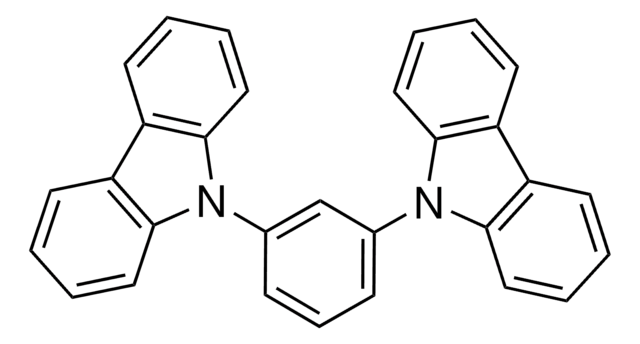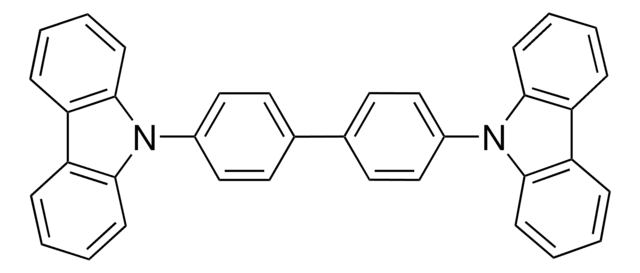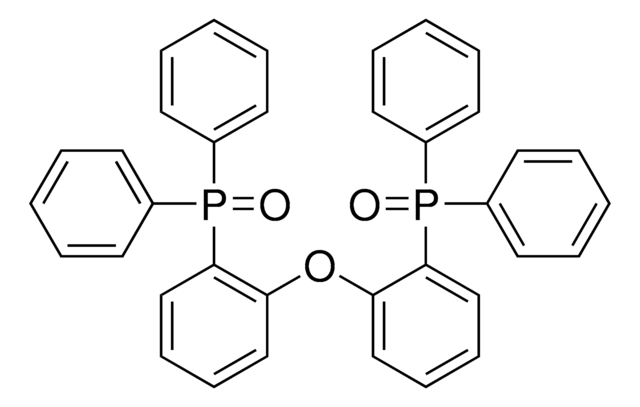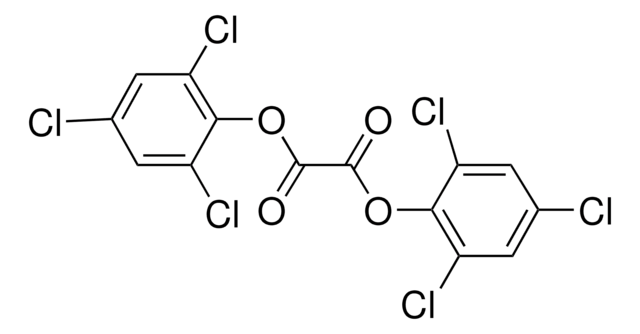660124
4,4′-Bis(N-carbazolyl)-1,1′-biphenyl
97%
Synonym(s):
4,4′-Bis(9-carbazolyl)-1,1′-biphenyl, 4,4-N,N′-Dicarbazole-1,1′-biphenyl, CBP, DCBP
About This Item
Recommended Products
Quality Level
Assay
97%
form
solid
greener alternative product characteristics
Design for Energy Efficiency
Learn more about the Principles of Green Chemistry.
sustainability
Greener Alternative Product
mp
281-285 °C
Orbital energy
HOMO 6 eV
LUMO 2.9 eV
OLED Device Performance
ITO/HMPD/CBP:Ir(ppy)3 (6%)/Alq3/Mg:Ag
ITO/MoO3/CBP/CBP:Ir(ppy)2(acac) (6%)/TPBI/LiF/Al
ITO/NPD/CBP:Ir(ppy)3 (6%)/Alq3/Mg:Ag
ITO/NPD/CBP:Ir(ppy)3 (6%)/niBr/Alq3/Mg:Ag
ITO/NPD/CBP:Ir(ppy)3/BCP/Alq3/Mg:Al
ITO/PEDOT:PSS/NPD/CBP:Ir(piq)3 (6 wt%)/Alq3/LiF/Al
ITO/TAPC/CBP:FIrpic (6%)/PO14/LiF/Al
greener alternative category
SMILES string
c1ccc2c(c1)n(-c3ccc(cc3)-c4ccc(cc4)-n5c6ccccc6c7ccccc57)c8ccccc28
InChI
1S/C36H24N2/c1-5-13-33-29(9-1)30-10-2-6-14-34(30)37(33)27-21-17-25(18-22-27)26-19-23-28(24-20-26)38-35-15-7-3-11-31(35)32-12-4-8-16-36(32)38/h1-24H
InChI key
VFUDMQLBKNMONU-UHFFFAOYSA-N
Looking for similar products? Visit Product Comparison Guide
General description
Application
Signal Word
Danger
Hazard Statements
Precautionary Statements
Hazard Classifications
Eye Dam. 1 - Skin Irrit. 2 - STOT SE 3
Target Organs
Respiratory system
Storage Class Code
11 - Combustible Solids
WGK
WGK 3
Flash Point(F)
Not applicable
Flash Point(C)
Not applicable
Personal Protective Equipment
Choose from one of the most recent versions:
Already Own This Product?
Find documentation for the products that you have recently purchased in the Document Library.
Articles
Materials Design Concepts for Efficient Blue OLEDs: A Joint Theoretical and Experimental Study
Global Trade Item Number
| SKU | GTIN |
|---|---|
| 660124-1G | 4061832733968 |
| 660124-5G | 4061833599907 |
Our team of scientists has experience in all areas of research including Life Science, Material Science, Chemical Synthesis, Chromatography, Analytical and many others.
Contact Technical Service









